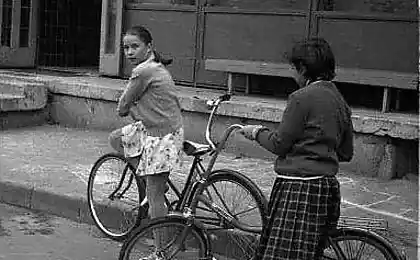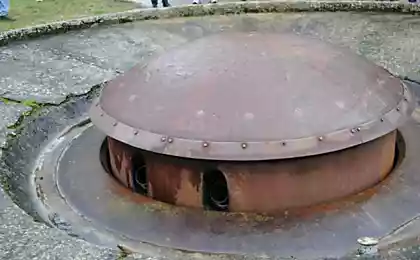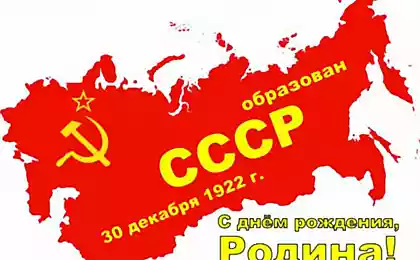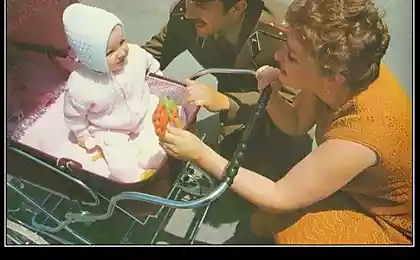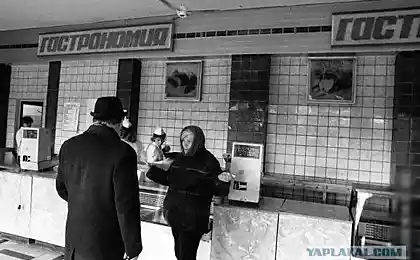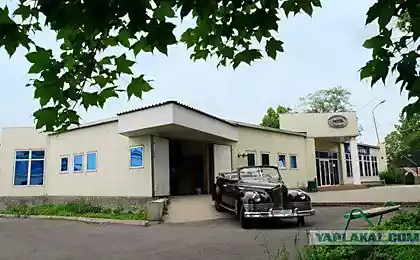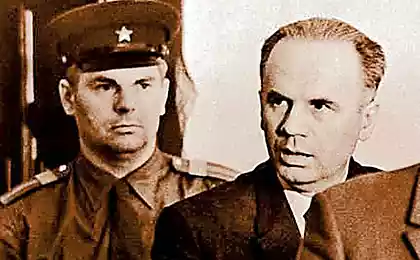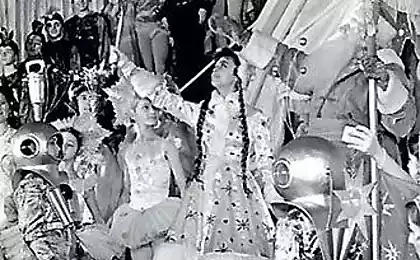1981
The first attacks in the USSR (7 pics + video)
36 years ago, on the Sabbath day January 8, 1977, in the USSR there were three explosions that marked the perhaps the first time in the USSR open terror aimed at ordinary citizens. First in 17.33, a bomb exploded in the train between Moscow subway stations "Izmailovskaya" and "Day". By happy coincidence, the train was not in the tunnel and in the open section of the route - or victims would be much greater.
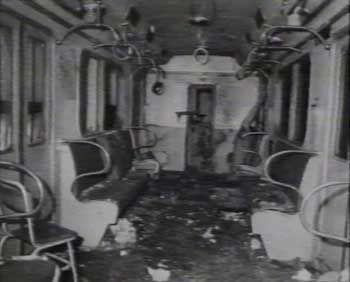
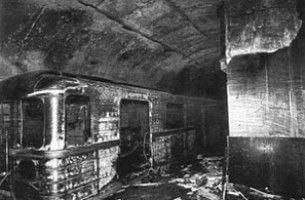
Then for forty minutes followed by two more explosions: at 18:05, a bomb exploded at the grocery store number 15 on the street Dzerzhinsky. A third explosion was heard at 18:10 near the grocery store number 5 on the street on October 25 (today. Nicholas), which is located between Red Square and the Lubyanka.
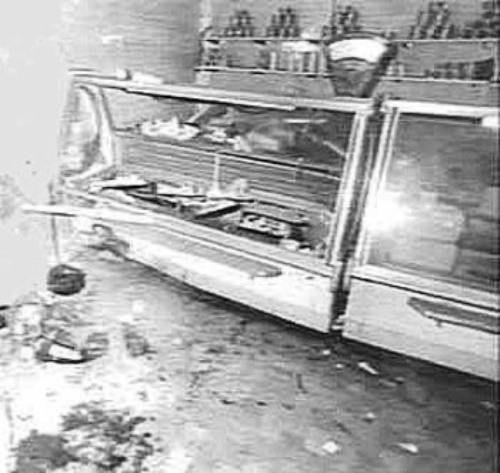
Most recently - 19 December 1976, the whole Soviet country magnificently celebrated the 70th anniversary of Brezhnev. These days, much has been said that the Soviet Union - a bastion of peace in the world, on the peaceful sky over the heads of the Soviet people, and proletarian internationalism (where the same without him) ... When Brezhnev was told about these explosions, he immediately demanded that the chairman of the KGB Andropov and Interior Minister Shchelokova immediately find the criminals. In search of criminals were thrown the best forces of the Prosecutor's Office, the Interior Ministry and the KGB, about the investigation regularly reported to Brezhnev personally. The operation was codenamed "Explosive", but to find the perpetrators "immediately" did not work.
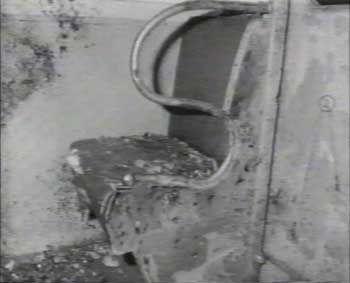
There have been no warning was not made no demands, no one claimed responsibility. Silence. January 10 came TASS, which mentioned only one explosion in the subway. Without giving information about the dead and wounded, it was reported that only "victims received medical attention." But the shortage of rumors were not. In trams, queues and smoking rooms fantastic discussed details of the incident, told the hundreds of victims. In the minds of decent Soviet citizens did not fit - who could expect to receive from the crime any benefit? Whether foreign spies, or some maniacs, or dissidents ...
At the same time there was a search for a needle in a haystack: on the details of explosive devices. In the shell of one of the bombs was recognized utyatnitsu cast iron with lid, made at the Kharkov plant lentotransportnogo equipment. Suspicion fell on the Ukrainian nationalists, but compiled a list of places you could get products factory, numbered as many as 40 cities in the Soviet Union.
It was established place of manufacture leatherette one of the bags in which the bomb was placed, but the list of companies - recipients of this skin fit on two pages of fine print. According to experts, electric bombs held a special electrode, which was used only in defense enterprises - in the development were included everyone who was involved in the "mailbox", where it was applied. It was found the origin of the arsenic that was present in the fragments of bombs, but it was widely used in the industry. Similar events were held in all parts and particles, which either directly or indirectly related to the bombshell - wires, screws, nuts, bolts, residues clockwork latex.
Of the signs of criminals, there were only a vague description of a tall, broad-shouldered man in a brown coat with a collar of beaver that pushing shoppers at the grocery store, ran into the street just before the explosion.
And then ... Or, and then the batteries run down ...
As you know, the good of all this, there was no, and the crime would have remained unsolved, if at the end of October 1977 the same criminals have decided to make another attack. To this end, they arrived in Moscow, and took a return ticket on the train "Moscow - Yerevan," they allegedly panicked and left, leaving a bag with a bomb in the waiting room of the Kursk railway station.
At the very bomb worth looking separately. With the help of hours she would explode after twenty minutes. Tumbler inclusion was a two-way: when you turn to the right electrical circuit in twenty minutes snaps to the light bulb, when you turn to the left - to the detonator. This was a brilliant stupidity or shrewdness. For instance, after the hours of one of the passengers called to be the bomber, walking away from the explosive device "Ale, you forgot the bag!". Taking the bomb back, just had to close the switch on the light bulb. At Kursk station terrorist initially turned to the left toggle switch, but noticing a patrol, he decided not to risk it and changed the direction of the current. After that he left the bag in the waiting room and went to the bathroom light. A few minutes later ownerless thing attracted attention. Some of the passengers looked inside and pulled out a blue jacket, a hat and a coil of wire. Stumbling on the clock and the burning light bulb, he immediately sounded the alarm.

The bag was taken to the police station. The duty officer, without hesitation, began to fiddle with wires and turned the switch. But the explosion did not happen: the battery by the time the village completely Long live the Soviet batteries and light bulbs.
On their feet the entire metropolitan police blocked the two airports, railway stations and highways that led to Yerevan. Since it was found that the bag was made in the Yerevan leather goods factory and commercially available only in Yerevan. In addition, the criminals left in the bag own clothes, especially autumn blue jacket. They were taken on arrival of the train "Moscow - Yerevan" (searched scantily clad citizens). They were Stepanian and Bagdasarian,
Search of the apartment revealed Stepanian wiring, which coincided with the Moscow "infernal machine & quot; seventeen positions. Soon KGB arrested and third-party Stepan Zatikyan explosions, fitters with "Armelektrozavoda" old acquaintance committee members.
Stepan Sarkisovich Zatikyan graduated from high school with a gold medal. In 1966, a student of the Yerevan Polytechnic Institute founded together with the artist Aykanuzom Khachatryan and student Shahen Harutyunyan illegal "United National Party of Armenia." ALD was nationalist group, aims to create an independent Armenia with the inclusion of land Turkish Armenia; secede from the USSR assumed by a plebiscite. The group has developed an active clandestine activities, had its own printing press and published the newspaper "Paros" ("Lighthouse"). In 1968 the founders of ALD, as well as several of their followers were arrested and tried for "anti-Soviet agitation and propaganda" and for participating in "anti-Soviet organization».
Zatikyan was one of the founders of BSS (Hairikian was his disciple and subordinate to the party hierarchy) .He has publicly renounced citizenship of the USSR, sent his Soviet passport in the Politburo of renunciation, demanded permission to leave. Notice the difference, Hayrikyan expelled from the country, Zatikyanu barred from traveling, sent passport ASSR indicating persuade to take back his passport (even imagine such hard in the USSR), he also refused to take him, tried to persuade his wife.
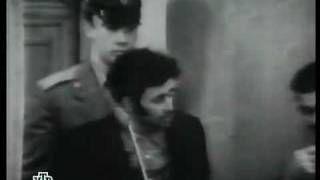
Annex to the indictment in a criminal case N197
SUMMARY
1. The criminal case was filed on January 8, 1977. Directorate of the KGB in Moscow and the Moscow region. Decided to manufacture the investigation department of the KGB on November 14, 1977.
2. Preliminary investigation completed on October 16, 1978.
3. The accused is in custody: Zatikyan - November 4, 1977. Stepanian - November 1, 1977. Baghdasaryan - November 1, 1977. All three were held in the detention center of the KGB.
4. charged: Zatikyanu - 14 November 1977. and 18 August 1978. Stepanian - 10 November 1977. and 24 August 1978. Baghdasaryan - 10 November 1977. and 21 August 1978.
5. The physical evidence in a criminal case
A. admission of affairs - Objects found the accused Zatikyan: a sheet of paper with a picture of the circuit electroexplosive chain improvised explosive device and a sketch of the installation to deploy elements of the chain on the body of explosive devices; three such sheets of paper; scheme of the Moscow subway lines and three schemes passenger transport routes in Moscow; - Objects found the accused Stepanyan scheme of lines of the Moscow Metro.
B. Store in a criminal case - the objects found on the site of the explosion on January 8, 1977. in the train station: socket bulbs, broken electric batteries, part of the lever toggle switch, wire scraps, EB parts, pieces of cambric and electrical tape, the details of the alarm "Glory", metal studs, nuts, iron splinters from utyatnitsu, pieces of bags made of imitation leather; - Items found at the site of the explosion on January 8, 1977. N15 in the store on the street. October 25 in Moscow: cast iron fragments from the pipe of the EB, the details of the toggle switch, metal studs, nuts, parts of watches "Victory" and pieces of cloth bags; - Items found at the site of the explosion on January 8, 1977. N5 at the store on the street. October 25 in Moscow: EB parts, metal cap electric batteries, a piece of electrical tape, metal stud, iron fragments from the pipe and parts of watches "Victory"; - Objects found on October 30, 1977. at the Kursk station in Moscow, three improvised explosive devices, three plastic bag, mesh bag and paper;
- Objects found the accused Zatikyan 54 metal studs, nuts 3, 12 metal discs, 6 tumblers, 4 segment cambric, 4 pieces and a coil of wire, 11 bulbs, solder, pieces of vulcanized rubber, two plates of brass sheets and pieces of cardboard , electrical tape, two pieces of wax candles and three electrosoldering, plastic bag;
- Items seized from the accused Stepanyan: metal disc, 4 nuts, two coils of wire, solder, toggle switches, electrical tape, a piece of wire, two plates of copper and alloy plate, close to the brass, 11 bulbs, two electric batteries, buckshot, candles 4 welded metal body explosive devices electrosolderers;
- Found a witness Muradian AA .: three electric batteries; - Objects found in the field of experimental explosions of devices: 9 steel fragments, fragment iron, remnants of EB, two scraps of paper;
B. stored in a cabinet material evidence of the investigation department of the KGB ... - electrodetonators and explosives from an explosive device discovered on October 30, 1977. at the Kursk railway station in Moscow, travel bag, sweater (shirt), fur cap and gloves belonging to the accused Stepanian; - Objects found the accused Stepanyan: two electric, blasting cap, pants tracksuit from the electric motor, as well as abrasive stone issued witness Muradian RM 6. Other items attached to the case: - sample shopping bag ... - samples of steel pipe ... - layouts explosive devices ... - hiking backpacks and folding shovel, seized from the accused Stepanyan and used in the production of the accused experimental explosions; travel bag ... 7. Six hunting knives seized from the witness Ambartsumian GH, and a hunting knife seized from the accused Stepanyan as purchased without proper authorization.
Baghdasaryan was virtually no evidence. The investigation concluded Stepan Zatikyan was the main organizer and leader of the terrorist attacks, Stepanian and Bagdasarian - their actual perpetrators.
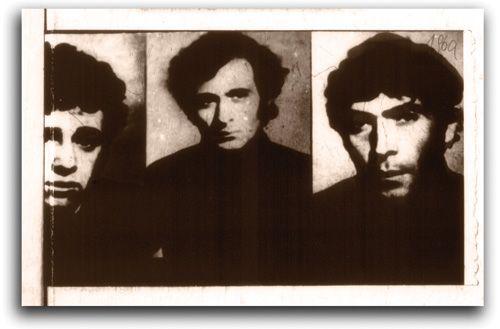
From left to right: Hagop Stepanian Stepan Zatikyan and Zaven Baghdasaryan
Closed trial lasted only four days from 16 to 20 January 1979. Zatikyan denied his guilt. Stepanian partially admitted his guilt, but denied involvement Zatikyan. Bagdasarian admitted all the charges against the result. January 24 was read out the death sentence. Another five days later, on January 30 sentenced were executed.
Preserved with video performances of the accused.


Then for forty minutes followed by two more explosions: at 18:05, a bomb exploded at the grocery store number 15 on the street Dzerzhinsky. A third explosion was heard at 18:10 near the grocery store number 5 on the street on October 25 (today. Nicholas), which is located between Red Square and the Lubyanka.

Most recently - 19 December 1976, the whole Soviet country magnificently celebrated the 70th anniversary of Brezhnev. These days, much has been said that the Soviet Union - a bastion of peace in the world, on the peaceful sky over the heads of the Soviet people, and proletarian internationalism (where the same without him) ... When Brezhnev was told about these explosions, he immediately demanded that the chairman of the KGB Andropov and Interior Minister Shchelokova immediately find the criminals. In search of criminals were thrown the best forces of the Prosecutor's Office, the Interior Ministry and the KGB, about the investigation regularly reported to Brezhnev personally. The operation was codenamed "Explosive", but to find the perpetrators "immediately" did not work.

There have been no warning was not made no demands, no one claimed responsibility. Silence. January 10 came TASS, which mentioned only one explosion in the subway. Without giving information about the dead and wounded, it was reported that only "victims received medical attention." But the shortage of rumors were not. In trams, queues and smoking rooms fantastic discussed details of the incident, told the hundreds of victims. In the minds of decent Soviet citizens did not fit - who could expect to receive from the crime any benefit? Whether foreign spies, or some maniacs, or dissidents ...
At the same time there was a search for a needle in a haystack: on the details of explosive devices. In the shell of one of the bombs was recognized utyatnitsu cast iron with lid, made at the Kharkov plant lentotransportnogo equipment. Suspicion fell on the Ukrainian nationalists, but compiled a list of places you could get products factory, numbered as many as 40 cities in the Soviet Union.
It was established place of manufacture leatherette one of the bags in which the bomb was placed, but the list of companies - recipients of this skin fit on two pages of fine print. According to experts, electric bombs held a special electrode, which was used only in defense enterprises - in the development were included everyone who was involved in the "mailbox", where it was applied. It was found the origin of the arsenic that was present in the fragments of bombs, but it was widely used in the industry. Similar events were held in all parts and particles, which either directly or indirectly related to the bombshell - wires, screws, nuts, bolts, residues clockwork latex.
Of the signs of criminals, there were only a vague description of a tall, broad-shouldered man in a brown coat with a collar of beaver that pushing shoppers at the grocery store, ran into the street just before the explosion.
And then ... Or, and then the batteries run down ...
As you know, the good of all this, there was no, and the crime would have remained unsolved, if at the end of October 1977 the same criminals have decided to make another attack. To this end, they arrived in Moscow, and took a return ticket on the train "Moscow - Yerevan," they allegedly panicked and left, leaving a bag with a bomb in the waiting room of the Kursk railway station.
At the very bomb worth looking separately. With the help of hours she would explode after twenty minutes. Tumbler inclusion was a two-way: when you turn to the right electrical circuit in twenty minutes snaps to the light bulb, when you turn to the left - to the detonator. This was a brilliant stupidity or shrewdness. For instance, after the hours of one of the passengers called to be the bomber, walking away from the explosive device "Ale, you forgot the bag!". Taking the bomb back, just had to close the switch on the light bulb. At Kursk station terrorist initially turned to the left toggle switch, but noticing a patrol, he decided not to risk it and changed the direction of the current. After that he left the bag in the waiting room and went to the bathroom light. A few minutes later ownerless thing attracted attention. Some of the passengers looked inside and pulled out a blue jacket, a hat and a coil of wire. Stumbling on the clock and the burning light bulb, he immediately sounded the alarm.

The bag was taken to the police station. The duty officer, without hesitation, began to fiddle with wires and turned the switch. But the explosion did not happen: the battery by the time the village completely Long live the Soviet batteries and light bulbs.
On their feet the entire metropolitan police blocked the two airports, railway stations and highways that led to Yerevan. Since it was found that the bag was made in the Yerevan leather goods factory and commercially available only in Yerevan. In addition, the criminals left in the bag own clothes, especially autumn blue jacket. They were taken on arrival of the train "Moscow - Yerevan" (searched scantily clad citizens). They were Stepanian and Bagdasarian,
Search of the apartment revealed Stepanian wiring, which coincided with the Moscow "infernal machine & quot; seventeen positions. Soon KGB arrested and third-party Stepan Zatikyan explosions, fitters with "Armelektrozavoda" old acquaintance committee members.
Stepan Sarkisovich Zatikyan graduated from high school with a gold medal. In 1966, a student of the Yerevan Polytechnic Institute founded together with the artist Aykanuzom Khachatryan and student Shahen Harutyunyan illegal "United National Party of Armenia." ALD was nationalist group, aims to create an independent Armenia with the inclusion of land Turkish Armenia; secede from the USSR assumed by a plebiscite. The group has developed an active clandestine activities, had its own printing press and published the newspaper "Paros" ("Lighthouse"). In 1968 the founders of ALD, as well as several of their followers were arrested and tried for "anti-Soviet agitation and propaganda" and for participating in "anti-Soviet organization».
Zatikyan was one of the founders of BSS (Hairikian was his disciple and subordinate to the party hierarchy) .He has publicly renounced citizenship of the USSR, sent his Soviet passport in the Politburo of renunciation, demanded permission to leave. Notice the difference, Hayrikyan expelled from the country, Zatikyanu barred from traveling, sent passport ASSR indicating persuade to take back his passport (even imagine such hard in the USSR), he also refused to take him, tried to persuade his wife.

Annex to the indictment in a criminal case N197
SUMMARY
1. The criminal case was filed on January 8, 1977. Directorate of the KGB in Moscow and the Moscow region. Decided to manufacture the investigation department of the KGB on November 14, 1977.
2. Preliminary investigation completed on October 16, 1978.
3. The accused is in custody: Zatikyan - November 4, 1977. Stepanian - November 1, 1977. Baghdasaryan - November 1, 1977. All three were held in the detention center of the KGB.
4. charged: Zatikyanu - 14 November 1977. and 18 August 1978. Stepanian - 10 November 1977. and 24 August 1978. Baghdasaryan - 10 November 1977. and 21 August 1978.
5. The physical evidence in a criminal case
A. admission of affairs - Objects found the accused Zatikyan: a sheet of paper with a picture of the circuit electroexplosive chain improvised explosive device and a sketch of the installation to deploy elements of the chain on the body of explosive devices; three such sheets of paper; scheme of the Moscow subway lines and three schemes passenger transport routes in Moscow; - Objects found the accused Stepanyan scheme of lines of the Moscow Metro.
B. Store in a criminal case - the objects found on the site of the explosion on January 8, 1977. in the train station: socket bulbs, broken electric batteries, part of the lever toggle switch, wire scraps, EB parts, pieces of cambric and electrical tape, the details of the alarm "Glory", metal studs, nuts, iron splinters from utyatnitsu, pieces of bags made of imitation leather; - Items found at the site of the explosion on January 8, 1977. N15 in the store on the street. October 25 in Moscow: cast iron fragments from the pipe of the EB, the details of the toggle switch, metal studs, nuts, parts of watches "Victory" and pieces of cloth bags; - Items found at the site of the explosion on January 8, 1977. N5 at the store on the street. October 25 in Moscow: EB parts, metal cap electric batteries, a piece of electrical tape, metal stud, iron fragments from the pipe and parts of watches "Victory"; - Objects found on October 30, 1977. at the Kursk station in Moscow, three improvised explosive devices, three plastic bag, mesh bag and paper;
- Objects found the accused Zatikyan 54 metal studs, nuts 3, 12 metal discs, 6 tumblers, 4 segment cambric, 4 pieces and a coil of wire, 11 bulbs, solder, pieces of vulcanized rubber, two plates of brass sheets and pieces of cardboard , electrical tape, two pieces of wax candles and three electrosoldering, plastic bag;
- Items seized from the accused Stepanyan: metal disc, 4 nuts, two coils of wire, solder, toggle switches, electrical tape, a piece of wire, two plates of copper and alloy plate, close to the brass, 11 bulbs, two electric batteries, buckshot, candles 4 welded metal body explosive devices electrosolderers;
- Found a witness Muradian AA .: three electric batteries; - Objects found in the field of experimental explosions of devices: 9 steel fragments, fragment iron, remnants of EB, two scraps of paper;
B. stored in a cabinet material evidence of the investigation department of the KGB ... - electrodetonators and explosives from an explosive device discovered on October 30, 1977. at the Kursk railway station in Moscow, travel bag, sweater (shirt), fur cap and gloves belonging to the accused Stepanian; - Objects found the accused Stepanyan: two electric, blasting cap, pants tracksuit from the electric motor, as well as abrasive stone issued witness Muradian RM 6. Other items attached to the case: - sample shopping bag ... - samples of steel pipe ... - layouts explosive devices ... - hiking backpacks and folding shovel, seized from the accused Stepanyan and used in the production of the accused experimental explosions; travel bag ... 7. Six hunting knives seized from the witness Ambartsumian GH, and a hunting knife seized from the accused Stepanyan as purchased without proper authorization.
Baghdasaryan was virtually no evidence. The investigation concluded Stepan Zatikyan was the main organizer and leader of the terrorist attacks, Stepanian and Bagdasarian - their actual perpetrators.

From left to right: Hagop Stepanian Stepan Zatikyan and Zaven Baghdasaryan
Closed trial lasted only four days from 16 to 20 January 1979. Zatikyan denied his guilt. Stepanian partially admitted his guilt, but denied involvement Zatikyan. Bagdasarian admitted all the charges against the result. January 24 was read out the death sentence. Another five days later, on January 30 sentenced were executed.
Preserved with video performances of the accused.
